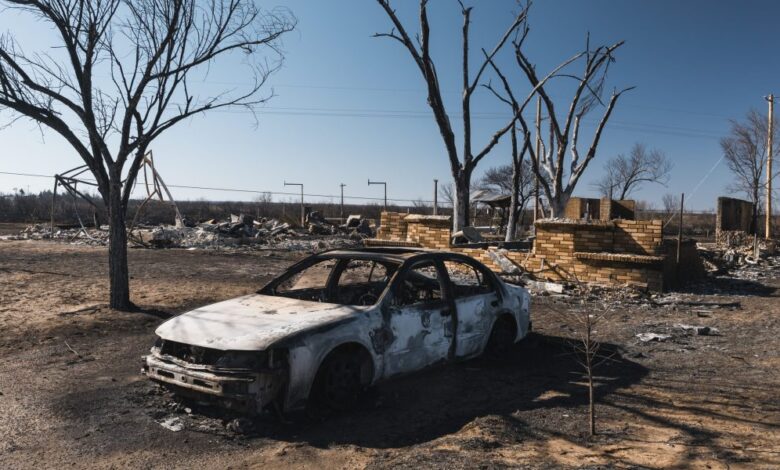Wildfires and Aging Infrastructure Threaten Western U.S. Utilities, Prompting Climate Change Concerns

Massive wildfires, once considered primarily a California issue, are now threatening utilities across the western United States. Texas officials have attributed the state’s largest-ever fire, a million-acre inferno, to electrical lines sparking in dry brush, fanned by powerful winds. Climate change, coupled with aging infrastructure, has created a harsh reality for utilities, endangering both the communities they serve and their own survival.
The impact of climate change and wildfires first became evident in California, where PG&E Corp., the state’s largest utility, filed for bankruptcy in 2019 after fires ignited by its power lines resulted in fatalities and extensive damage. However, the threat has expanded beyond California, affecting areas such as Texas, Oregon, and Colorado.
Warren Buffett, in his annual letter to investors, recently warned of the challenges facing utilities in some Western states, suggesting the possibility of “zero profitability or even bankruptcy.” Investors, once viewing electric utilities as safe and stable investments, are now grappling with uncertainties related to climate change and wildfires.
The Smokehouse Creek Fire in the Texas Panhandle, fueled by power lines, exemplifies the broader issue. Utility-owner Xcel Energy Inc. acknowledged its equipment’s likely involvement in the fire, which destroyed homes and claimed lives. Xcel faces lawsuits and disputes allegations of negligence in maintaining and operating its power infrastructure.
Utilities across the western U.S. are adjusting their operations and investing heavily to mitigate wildfire risks. California utilities, for instance, implement power shut-offs during peak fire danger, a practice that has drawn criticism. The industry is also focusing on infrastructure improvements, including replacing outdated power poles and implementing protective measures on power lines.
The evolving threat of wildfires and the need for substantial investments raise questions about the industry’s preparedness and the potential impact on customers. While California has been a focal point, recent incidents highlight the broader challenge, prompting a reassessment of strategies to address climate change, safeguard communities, and maintain a reliable and safe power system.
As utilities grapple with these challenges, the intersection of climate change, infrastructure vulnerabilities, and regulatory measures will likely shape the industry’s trajectory in the years to come.

